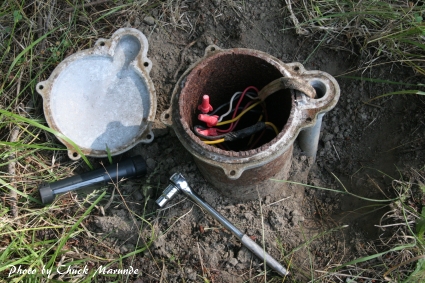How to Measure your Well’s Depth to Water

When in the process of trying to decide what type of deep well pump you need, one of the most important factors in that decision is your well’s depth to water, or head. This is the distance from the ground level to the top of the water. Wells will usually have a depth to water that is higher than their total depth. For example, a well could be 200’ deep, but the depth to water comes up to about 75’. It is important to use the depth to water (which in this example is 75’) rather than the total well depth when deciding which pump to buy.
In order to get the most accurate reading for your well head, be sure to turn off your pump and let the well recover. Many wells will have a drawdown, which means that as water is pumped from the well, the water level will get lower. It can take anywhere between a few minutes to a full day for the well to return to its regular water level.
If you know your well drilling company, it is possible that they would have all the information that you require. Contact them and ask for the well depth, the well head, and the drawdown. If you do not know your well drilling company, you can use the methods below to measure the well head yourself. The entire process is very simple and cost effective.
To measure the actual well head, you will need the following tools:
-A long string
-A fishing float or “bobber”
-A small, non-lead weight such as a metal washer or fishing sinker
-Tape measure
Depending on the depth of your well, you may need an extremely long string. Sometimes, even a regular fishing rod will work for this application. Once you have all your materials, tie the weight to the bottom of the string and the fishing float a few inches above. Carefully drop the weight into the well and lower it until it stops dropping. Take up the slack and mark the string at ground level. Pull up the weight from the well and measure it from the bobber to the mark, and that will be your depth to water, or head.
With this information, you can now choose the right pump for your well.